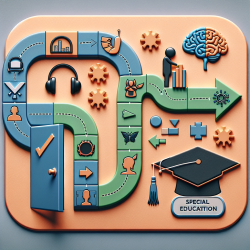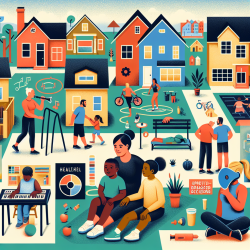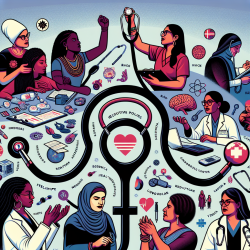Introduction
In the ever-evolving landscape of speech-language pathology, practitioners are constantly seeking ways to enhance their practice and improve outcomes for children. A recent study titled Intersecting systemic and personal barriers to accessing social services: qualitative interviews in northern California sheds light on the obstacles that individuals face when trying to access social services. This research provides valuable insights that can be leveraged by practitioners to refine their approach and advocate for systemic change.
Understanding the Barriers
The study identifies two primary domains of barriers: systemic and personal. Systemic barriers include issues like limited availability and accessibility of resources, strict program criteria, and complex application processes. Personal barriers, on the other hand, encompass challenges such as physical and mental health issues, social isolation, and financial limitations. These barriers often intersect, creating a complex web that hinders individuals from accessing the services they need.
Implementing Research Findings in Practice
As practitioners, understanding these barriers is the first step towards creating meaningful change. Here are some strategies to consider:
- Advocacy for Systemic Change: Use your voice to advocate for policy changes that address systemic barriers. This could involve collaborating with community organizations to improve resource availability and accessibility.
- Enhanced Screening Processes: Implement comprehensive screening processes to identify not only the speech and language needs of children but also any social determinants that may impact their therapy outcomes.
- Building Stronger Partnerships: Develop partnerships with local social service agencies to create a network of support for your clients. This can help streamline the referral process and ensure that families receive the assistance they need.
- Personalized Support Plans: Recognize the unique personal barriers that each child and family may face. Develop personalized support plans that take these barriers into account and provide targeted interventions.
Encouraging Further Research
While the study provides a framework for understanding barriers, further research is needed to explore the nuances of these challenges and develop innovative solutions. Practitioners are encouraged to engage in research activities, whether through conducting their own studies or collaborating with academic institutions.
Conclusion
By understanding and addressing the systemic and personal barriers identified in the study, speech-language pathologists can enhance their practice and create better outcomes for children. To delve deeper into the findings and explore the original research, please follow this link: Intersecting systemic and personal barriers to accessing social services: qualitative interviews in northern California.










